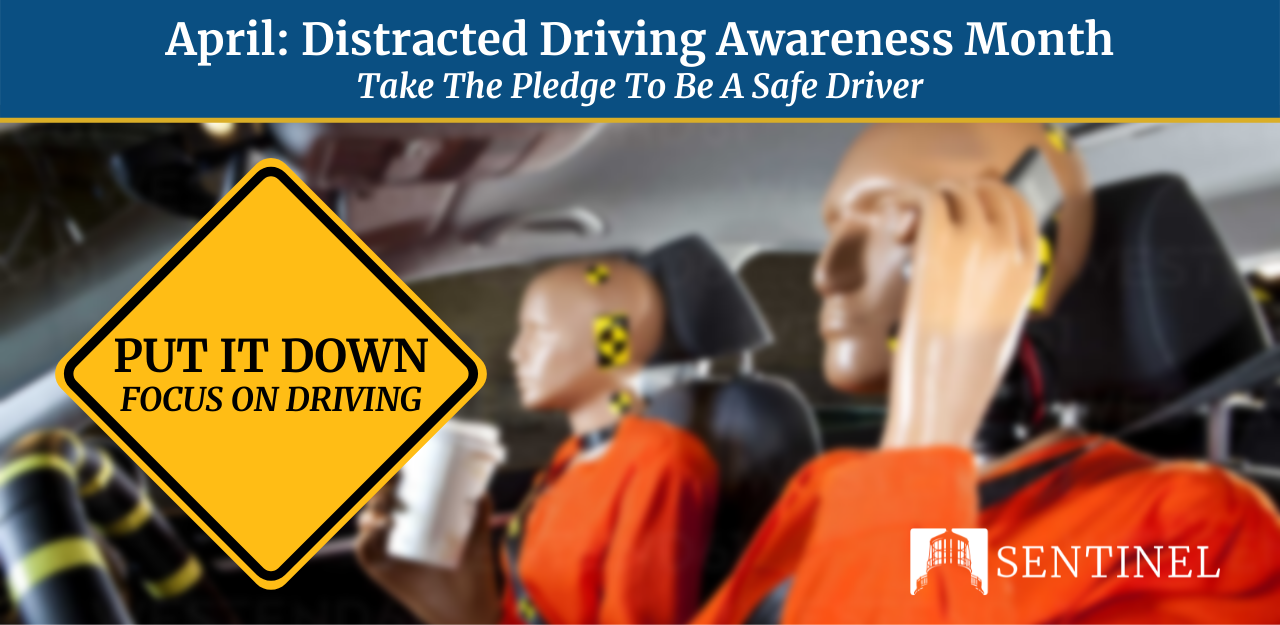Distracted Driving Awareness Month: Take The Pledge To Be A Safe Driver
Play your part this month (and every month) by following the steps below to avoid distractions while you drive – keeping both yourself and others safe on the road.
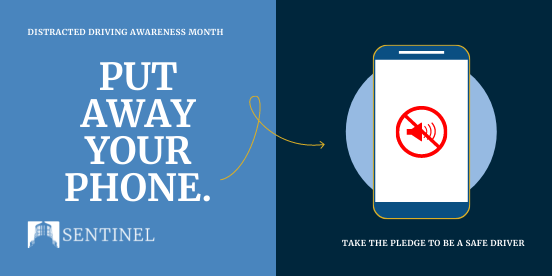
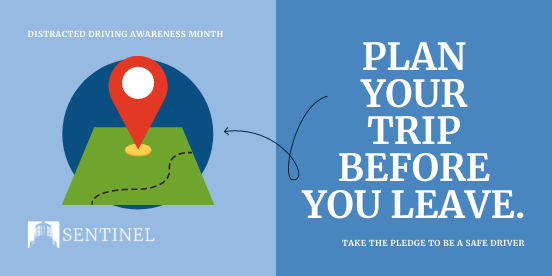
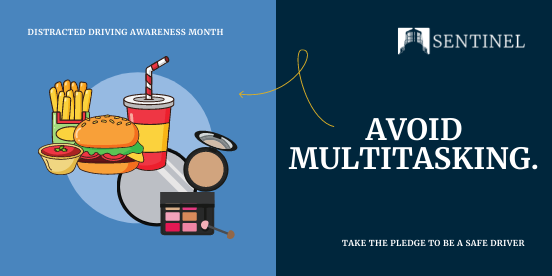
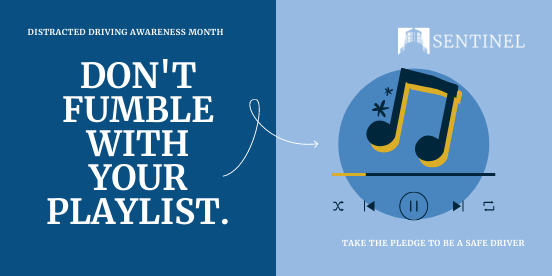
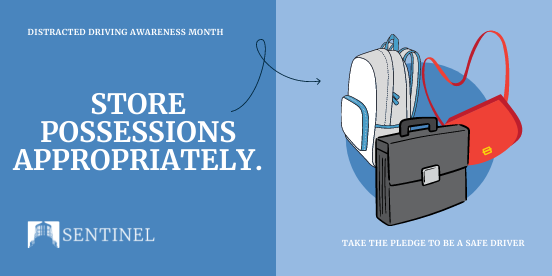
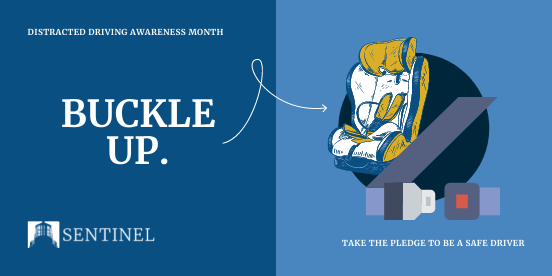
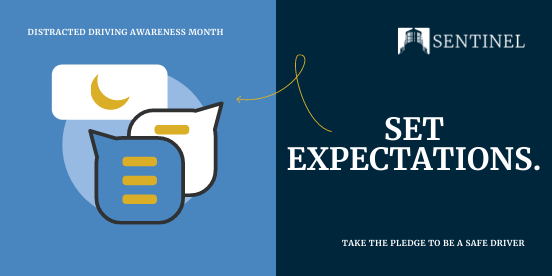
Each and every April, we are gently reminded to be focused when behind the wheel. This campaign, led by the National Safety Council (NSC), focuses mainly on cell phone use. Although there are many distractions while driving, the use of a cell phone remains the top contender. Add to that the enhanced technology/infotainment systems found in newer vehicles and distractions are at an all-time high. Tragically over 40,000 deaths and 276,000 injuries are attributed to distracted driving annually.
As the path back to normalcy continues post-COVID, we once again are faced with the familiar traffic patterns of old. Most cities are back to pre-pandemic traffic levels, even with the hybrid working schedules that many companies have implemented. Once open roadways are again filled with congested traffic patterns and that one last vehicle pushing to make it through the yellow light ahead.
Driving continues to be one of the more dangerous activities we engage in throughout the course of our day. These driving activities are becoming more and more integrated with technology based on the seemingly never-ending connected devices we use in our daily lives. Even though these devices do offer many conveniences, they can also yield serious consequences when one becomes distracted.
According to the NSC’s preliminary data, estimates of total motor-vehicle deaths for 2021 is 46,020, up 9% from 42,339 in 2020 and up 18% from 39,107 in 2019. Mileage in 2021 rebounded 11% from COVID-19 lows in 2020 and only lags 2019 mileage by 1%. If we focus on this in with more of a risk-based lens and carve out numbers for the workplace, we see that transportation incidents remained the most frequent of fatal events, accounting for 37.3% of all work-related fatalities per BLS.gov.
Fatal Work Injuries by Major Event or Exposure
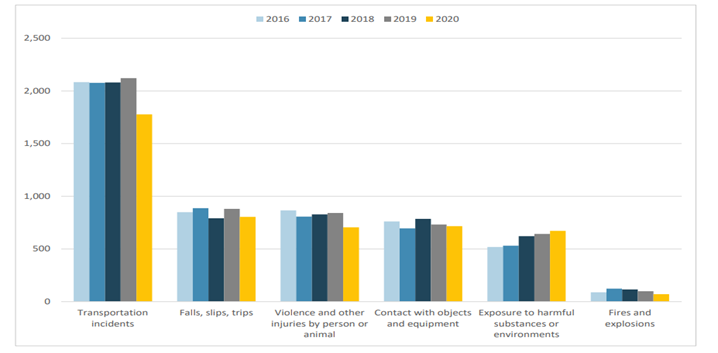
*Source: bls.gov
We all know the dangers of distracted driving, yet on any short drive, you will count a high number of distracted drivers on the roadways. Distracted driving covers a broad area: adjusting your vehicle settings, changing the radio stations, talking on the phone, and finishing that last bite of food as you navigate to your destination. None of these distractions are more apparent than texting and driving. According to the National Highway Safety Traffic Safety Administration (NHSTA), sending or reading a text takes your eyes off the road for an average of five seconds. Traveling 55 mph is the equivalent of driving the length of an entire football field with your eyes closed.
Statistics have proven to be one of the most valuable tools available to better understand risk. It is important to understand both the impact and consequences of your unsafe actions behind the wheel. In addition, there continue to be more and more criminal repercussions for those who are found negligent while using an automobile, including distracted driving. This video link shows the reality of making poor decisions that involve distracted driving, and the impact on those involved: youtube.com/watch?v=MUSo89BLRcI
The NHSTA assigned the critical reason, which is the last event in the crash causation chain, back to the driver 94% of the time. If we stop and take the time to think about statistics and apply a visual, perhaps this can help lead you down the path of taking the pledge to become a safer driver that will allow you to return home safely.
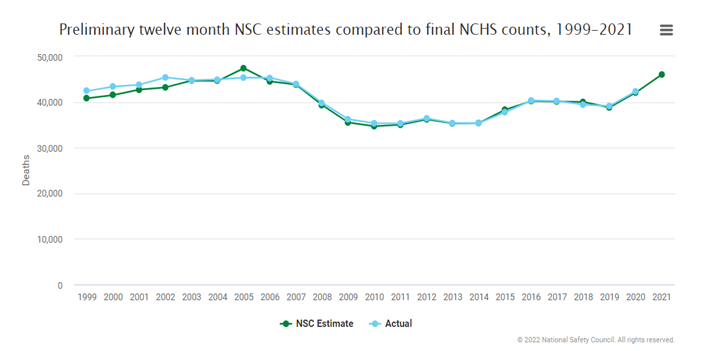
In this month of Distracted Driving Awareness, set simple goals for those areas you can improve upon while driving. For everyone, this should include putting the phone down while traveling. Out of sight, and out of mind can be a powerful and proactive method to help prevent distracted driving. Other options include taking advantage of the technology that helps you become a safer driver, such as activating phone features such as “Do Not Disturb”. We all know that bad things can happen to good people and good companies. None of us are immune; so take some simple steps to mitigate mistakes by putting the phone down and actively limiting your distractions. Take the pledge with the Sentinel Team to be a safe driver.

